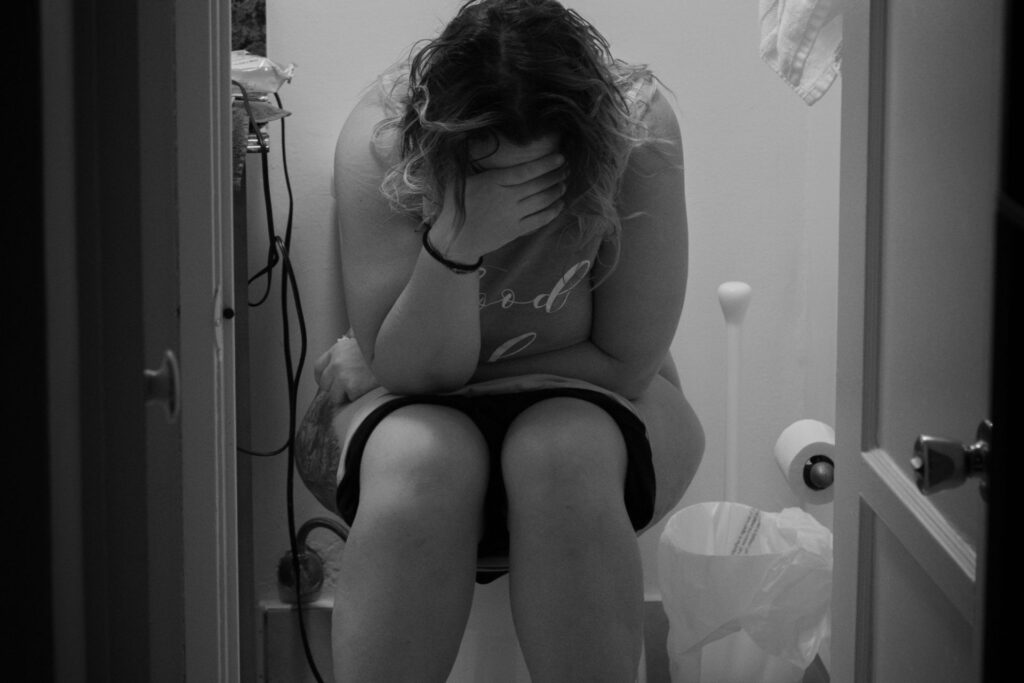Familiarize yourself with breathing and relaxation techniques that will allow you and your partner to get in touch with your body and your needs. Each day, try spending quiet time with your partner or by yourself, relaxing and getting in tune with your breathing. The ultimate goal of relaxation when giving birth is maximizing oxygen supply to the uterus, improving uterine efficiency. If you are stressed, the uterus tenses up, causing more pain.
Preparation
Get into a comfortable position, side lying or semi-sitting, supported by pillows.
- Don’t let your hands and feet dangle; this makes your muscles work, increasing tension.
- Ensure all body joints are slightly flexed.
- Have a blanket ready, should you get cold.
- Create a distraction-free environment; dim the lights, play quiet, peaceful music.
You can bring your own MP3 player to the hospital. (Hospital policies, often prohibit your plugging in electrical equipment.)
When you have mastered relaxation in this quiet, controlled environment, progress to a ‘busy’ environment, since the hospital is a frenetic place, with many distractions. If you feel extremely tense and anxious during labour, ask everyone to clear the room. This might help you refocus.
Methods of Relaxing
Progressive Relaxation
This is focusing on one or more muscle group at a time to relax your entire body. Tense each body part for about six seconds and release (don’t hold your breath). Slowly tour your body, consciously tensing and releasing muscle groups, working down from facial muscles to toes. Your partner or a taped voice can also guide you through.
Touch Relaxation
Your partner can apply the following techniques:
- Apply a gentle, still touch over a tense area until that area relaxes completely.
- Apply firm pressure to tense areas with fingertips and/or palm of hand. Slowly release tense area.
- Gently stroke tense area away from centre of body, massaging tense muscles.
As you become familiar with your body, your partner will be able to recognize tense areas and go directly to them.
‘Puppet String' Relaxation
Imagine you are a puppet with strings attached to your body. Imagine lifting one string up, then relaxing it (i.e., elbow string). Once you have mastered this technique, lift multiple strings simultaneously (i.e., elbow and foot) and relax them.
Guided Imagery
This form of relaxation uses the body and mind. Form a mental picture of a pleasant scene (i.e., a warm bath or tanning on a beach) and escape into that scene. Remember that relaxing involves controlled breathing.
Breathing
Our pace and rate of breathing changes constantly depending on our emotional and medical status. Pain or panic can cause rapid breathing or forceful exhaling, resulting in the flushing of carbon dioxide out of our system (hyperventilation). Hyperventilating causes a sense of dryness, dizziness and lightheadedness.
Greeting Breath
Recommended for any type of contraction, greeting breath is also known as cleansing breath, relaxing breath, in/out breath, refuelling breath, and complete breath. Perform this type of breathing at the beginning and end of a contraction.
- Take a deep breath through your nose and out through your mouth. (If you are congested, breathe through mouth only.)
- Imagine breathing in energy and releasing tension.
- Combine stretching your body as you breathe in, returning to starting position as you breathe out.
This type of breathing allows maximum expansion of lungs and a complete exchange of gases. Breathing should be effortless.
Slow-Paced, Rhythmical, Full-Chest Breathing
This is for tolerable contractions (usually in the early stages of labour).
- Breathe slowly and effortlessly, half the pace of your regular breathing patterns, or a rate of 6–10 breaths/minute.
- As you breathe in through your nose, you or your partner can place your hands under the rib cage and observe the rise and swell as air enters lungs. When you breathe out through your mouth, observe how the chest falls and you feel more relaxed.
- While your partner is timing the contractions, concentrate on a focal point (an object or person in the room) or, with eyes closed, in your imagination.
Roving Body Check with Slow Breathing
This technique combines breathing and relaxation.
- Slowly breathe in through nose and out through the mouth, releasing tension in one part of the body.
- Breathe in as your partner massages the tense area of your body. As you exhale, your partner can gently release that part of your body, telling you when to let go and relax.
- Move slowly in this fashion throughout your whole body at your own pace, giving regular feedback to your coach.
Upper Chest or Light Breathing
Used during more intense labour, when slow breathing no longer helps, and you can no longer perform any activity during contractions, such as walking.
- Breathe between your mouth and bra line, faster than the light breathing rate, 30–60 breaths/minute.
- Your coach can place hands on your upper back below your shoulder blades. You can feel the pressure in his hands when you breathe.
- Make quiet but audible ‘hee-ha’ sounds.
- Place your tongue behind your bottom teeth and relax your mouth in a gentle smile on the out breath. This will help keep your mouth moist.
- Maintain equal breaths in and out to avoid hyperventilation.
Transition Breathing
Used when deep or shallow breathing is no longer helpful. This form of breathing is at the centre of the mouth, not behind the throat.
- Sit or stand up.
- Part your lips gently into a smile and breathe in and out through parted lips.
Breathing (During Second Stage Labour/ Pushing Stage)
Spontaneous or Self-Directed Pushing
You are the best judge of how to push.
- Relax your pelvic floor by breathing in a pattern that works for you.
- Avoid straining. Push as your body conveys.
- Avoid prolonged breath-holding, which results in gasping for air. You may feel more than one urge to push during a contraction. This lasts a few seconds.
- Exhale during pushing; make as many groans, grunts and moans as you want.
- Pant or blow during crowning to prevent tissue damage or trauma. As you concentrate on breathing, your body begins to relax, and your breathing follows a natural rhythm that best suits you. The two of you work together, just like you and your baby
Benefits of Applying Good Breathing Techniques
- Air circulation will improve and will supply baby and uterus with much needed oxygen and nutrients, while excreting carbon dioxide.
- Decreasing or avoiding breathlessness, which is common in prenatal and labouring women.
- Heart and lungs will be better prepared for oncoming labour. Your partner/coach needs to learn and follow your breathing pattern so that you can be guided during labour. (Your breathing patterns may differ if your contractions are artificially augmented.)
Directed Pushing
This is used when you have been given medications(i.e., epidural) because you usually can’t feel the urge to push.
- The hospital staff will guide you.
- Take a breath in/out and hold.
- Push down – way down.
- Your partner counts 1,2,3,4,5,6.
- Slowly blow out air.
Katarina Ehler is a Public Health nurse with City of Toronto. She has taught prenatal classes, implemented a prenatal education program, worked as an infant loss group facilitator and as a public educator with Bereaved Families of Ontario.










